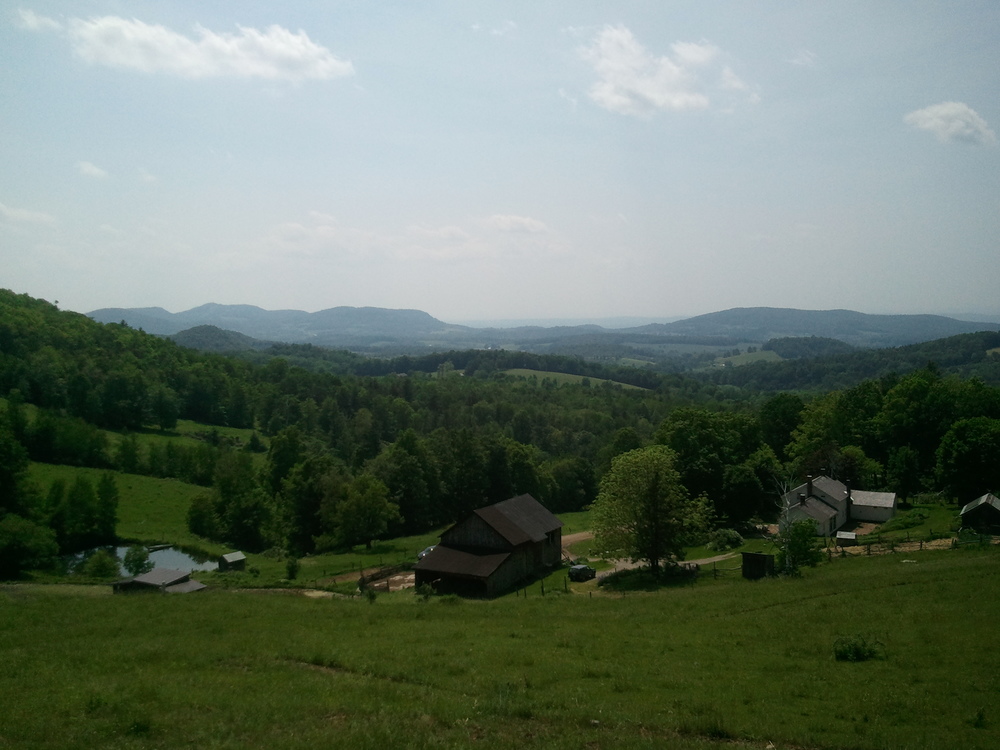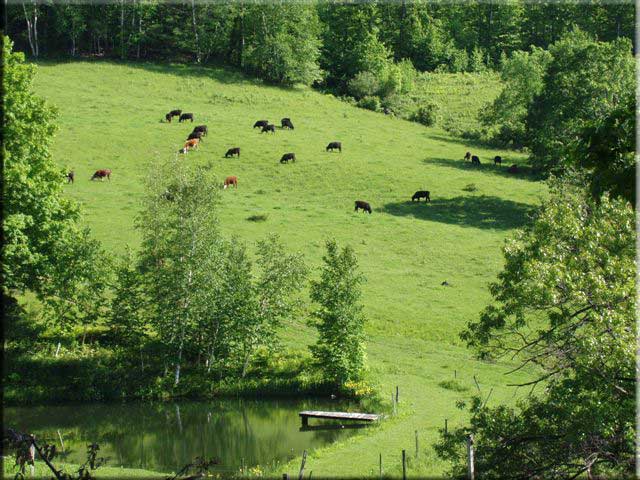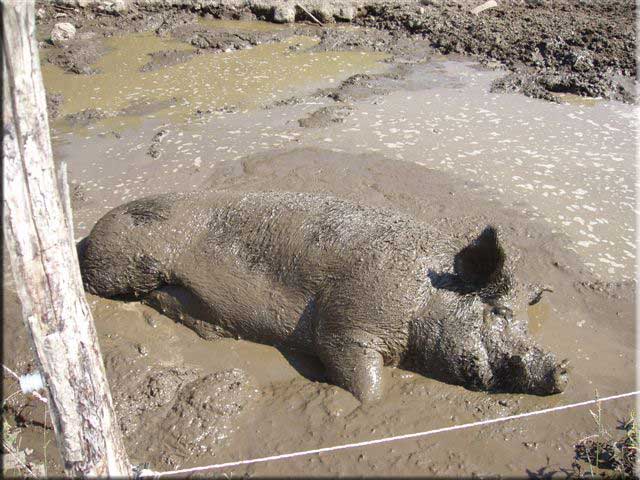Cows on Pasture at Lewis Waite Farm
Living in NYC, multiple bars are always within walking distance. We used to spend our weekends "bar hopping" with friends. Now we spend our weekends farm hopping!
We’ve been hopping between farms on the weekends and speaking to farmers all over the country to try to get a better sense for which enterprises inspire us most and also fit with our vision for the farm. We hope others will take our lead and get out to see some farms!
Earlier this year we attended a Just Food CSA Conference and had the wonderful opportunity to meet Alan and Nancy Brown of Lewis Waite Farm, in Jackson, NY. We first encountered Alan and Nancy at their vendor stand and immediately engaged in conversation about their operation. We couldn't have been luckier to meet a couple with such open arms and hearts.
Earlier this year we attended a Just Food CSA Conference and had the wonderful opportunity to meet Alan and Nancy Brown of Lewis Waite Farm, in Jackson, NY. We first encountered Alan and Nancy at their vendor stand and immediately engaged in conversation about their operation. We couldn't have been luckier to meet a couple with such open arms and hearts.
Lewis Waite runs a mixed herd of 115 cattle and 20-40 hogs of different breeds on over 450 acres of rolling pastures and woods. This wonderful meat makes its way to consumers via direct order forms that are marketed by CSAs in and around New York City.
The model works like this: You have a typical CSA that provides fruits, veggies, maybe some eggs. Very rarely will you find CSAs that offer much more. However, most members would love to have access to a variety of pastured meats, artisanal cheeses, raw honey, small-batch jam, local and unprocessed grains, etc. Lewis Waite realized this and decided to provide a type of aggregation service that attaches on to a typical CSA. Lewis Waite provides beef and pork from its own farm and then takes delivery of a multitude of other products from local farms and then distributes to CSA pickup points all over the NYC area. CSA members can decide each week exactly what they want, place the order with Lewis Waite and then when they go pick-up the normal CSA share they can also get almost everything else they need! No need to go to a store, it’s fantastic.
We love this distribution model because it really advances the consumers thinking beyond just produce. We can relate because we first started off with fruits and veggies and never really gave much thought to meats, cheeses, eggs, and grains. Once you try pastured pork, farm-fresh eggs and unprocessed grains there’s no looking back, and don’t even get us started on the different cheeses!
So, back to the story. We went up to the farm on an early Saturday morning with plans to stay through Monday afternoon. If you’ve been in NY at all this year you’ve probably noticed that it’s quite rainy. Well, we were lucky enough to pick a weekend that was sunny and beautiful nearly the entire time. That’s good because we had the chance to camp out at the top of their highest hill, which overlooks the Adirondacks on one side and the Hudson Valley on the other. Of course Nancy was kind enough to offer the guest room, but we couldn’t refuse waking up on top of hill with such a beautiful view. We knew we were kindred souls when Alan told us about the New Year’s Eve when he and Nancy built a straw bale igloo and spent the night in the exact same spot! Check out the view:
The model works like this: You have a typical CSA that provides fruits, veggies, maybe some eggs. Very rarely will you find CSAs that offer much more. However, most members would love to have access to a variety of pastured meats, artisanal cheeses, raw honey, small-batch jam, local and unprocessed grains, etc. Lewis Waite realized this and decided to provide a type of aggregation service that attaches on to a typical CSA. Lewis Waite provides beef and pork from its own farm and then takes delivery of a multitude of other products from local farms and then distributes to CSA pickup points all over the NYC area. CSA members can decide each week exactly what they want, place the order with Lewis Waite and then when they go pick-up the normal CSA share they can also get almost everything else they need! No need to go to a store, it’s fantastic.
We love this distribution model because it really advances the consumers thinking beyond just produce. We can relate because we first started off with fruits and veggies and never really gave much thought to meats, cheeses, eggs, and grains. Once you try pastured pork, farm-fresh eggs and unprocessed grains there’s no looking back, and don’t even get us started on the different cheeses!
So, back to the story. We went up to the farm on an early Saturday morning with plans to stay through Monday afternoon. If you’ve been in NY at all this year you’ve probably noticed that it’s quite rainy. Well, we were lucky enough to pick a weekend that was sunny and beautiful nearly the entire time. That’s good because we had the chance to camp out at the top of their highest hill, which overlooks the Adirondacks on one side and the Hudson Valley on the other. Of course Nancy was kind enough to offer the guest room, but we couldn’t refuse waking up on top of hill with such a beautiful view. We knew we were kindred souls when Alan told us about the New Year’s Eve when he and Nancy built a straw bale igloo and spent the night in the exact same spot! Check out the view:
 View from our campsite on the hill
View from our campsite on the hillTo help out around the farm Sweetbreads spent time with Nancy getting the garden ready. One of Lewis Waite’s CSA coordinators was visiting that same weekend, so the three ladies took to digging out the weed patches and planting seeds for the summer harvest. Alan and Nancy are big fans of straw mulching the garden, so between seed rows they laid 2-3 inches of straw. Straw mulching serves many purposes. It conserves soil moisture, keeps down weeds, reduces erosion, keeps plant roots cool, and provides nutrients to the soil. The ladies made good headway on some overgrown witchgrass and mint patches and managed to get beets, squash, arugula and other seeds planted.
I spent some time with Alan rounding up a tractor that could pull a rake to level out a road he had recently made for their new storage facility. The normal tractor was having transmission problems, so we had to get a different one from another property they own down the road. It hadn’t been used since last fall, so it required some gas and a jump and that baby was on the road. After a bit of raking we went to feed the pigs and check on the cow herd. The pigs receive a ration of local, non-GMO grain with minerals and kelp mixed in. They get plenty of their diet from rooting around the pastures as well. I tell you one thing, those pigs could eat some forage! Even the “weeds” leftover from the garden went to the pigs and boy did they get gobbled up.
Probably the most exciting part of the trip was the cow herd check with Alan. The herd was on the other side of their mini-mountain, so we took the Jeep around to the other side and put it in 4 Low and trucked on up to see how they were doing. It had been rainy the few days prior and the lower part of the pasture was in need of some brush hogging, so that made for some fun off-roading! I learned quickly that having the window rolled all the way down and my arm hanging out might not be the best idea!
We were about two days before calving season started, so we kept a look out for newborns that might not be visible behind the tall grass. All was quiet among the herd and no newborns to be found. Alan explained to us how Lewis Waite doesn’t wean and believes in letting the animals live as naturally as possible. It was easy to identify two or three generations of some families within the permanent cow herd and more were on the way. Since grassfed beef takes 2+ years to reach a finishing weight there was a good mix of different aged cows around for us to see. During our farm visits I’ve enjoyed seeing the animals at different ages and trying to learn how to guesstimate ages and weights.
Our final day on the farm we helped put up some new pig fencing, which was fun because Alan uses a mix of polywire fencing and also metal strands that are strung along the sides of trees in the wooded areas. We headed into the woods and strung up a new paddock for the pigs with the metal wire, which was a new experience for us. Before then we’d only seen polywire. The pigs love the woodlots and had a very nice balance of pasture and woods in their paddocks. With a little coaxing and a slow game of follow-the-leader the pigs moved right in to their new home. Alan planned to reseed the old paddock so that the pigs could pass through again a few months in the future. Nothing made me happier than seeing those pigs running around outside and digging up whatever they want. They had some mud wallows that would make the Romans jealous!
In between all that work we had some wonderful meals and great discussions. On our way out we filled our bags with beef and pork products from the farm and some honey and jam from their local farm partners. You can read more about how we cooked some of the meat in our Eating the Offal posts.
Know Your Farmer Tip
It’s not easy convincing someone to let you on their property and share with you the knowledge they’ve acquired over many hard years of labor. So at the end of each Farm Hopping post we’ll include a tip or two that made it easier for us to fit right in.
The first and best tip is to bring some wine! Nothing brings the crew together better than a good home-cooked meal and a few bottles of wine. Since you’re visiting a farm, chances are they have much better food than you could ever bring, so take the opportunity to bring up some vino and take the edge off after a hard day’s work.
‘ til next time,



